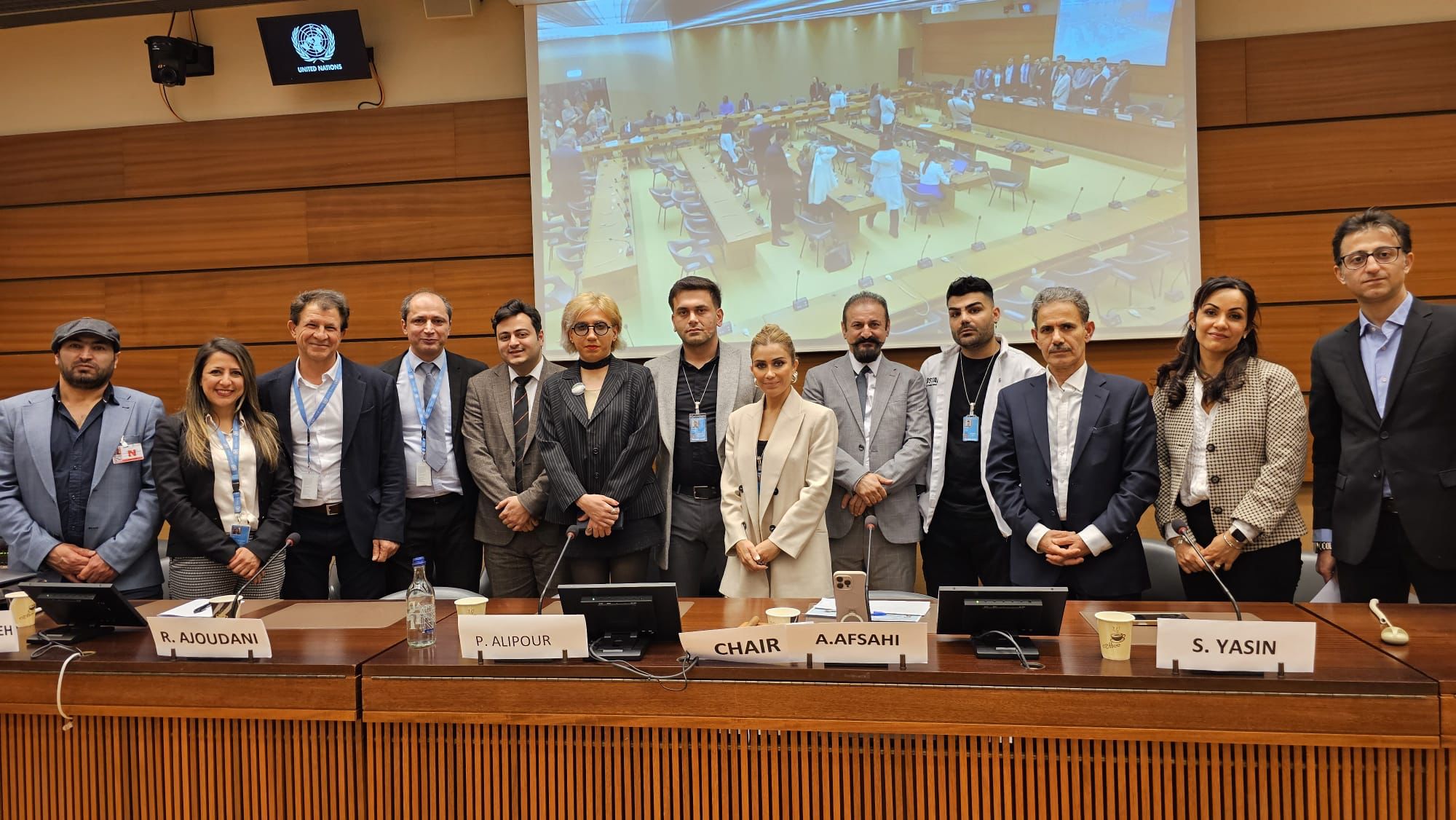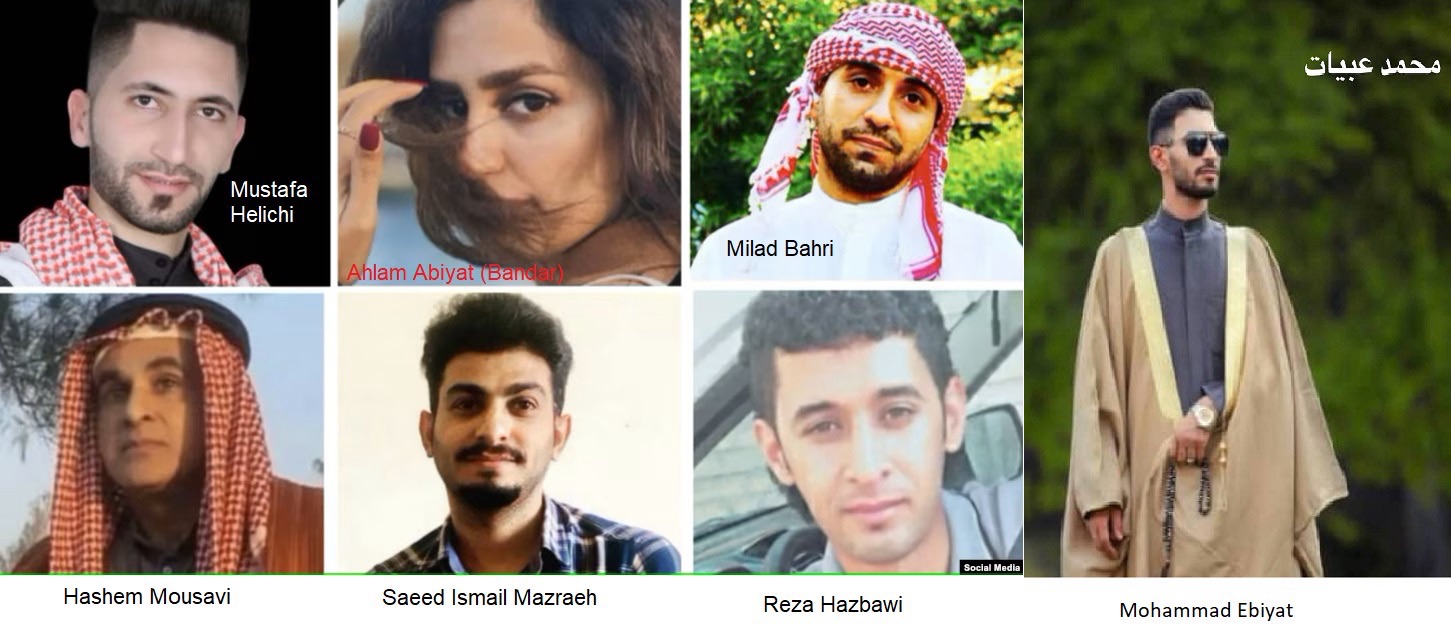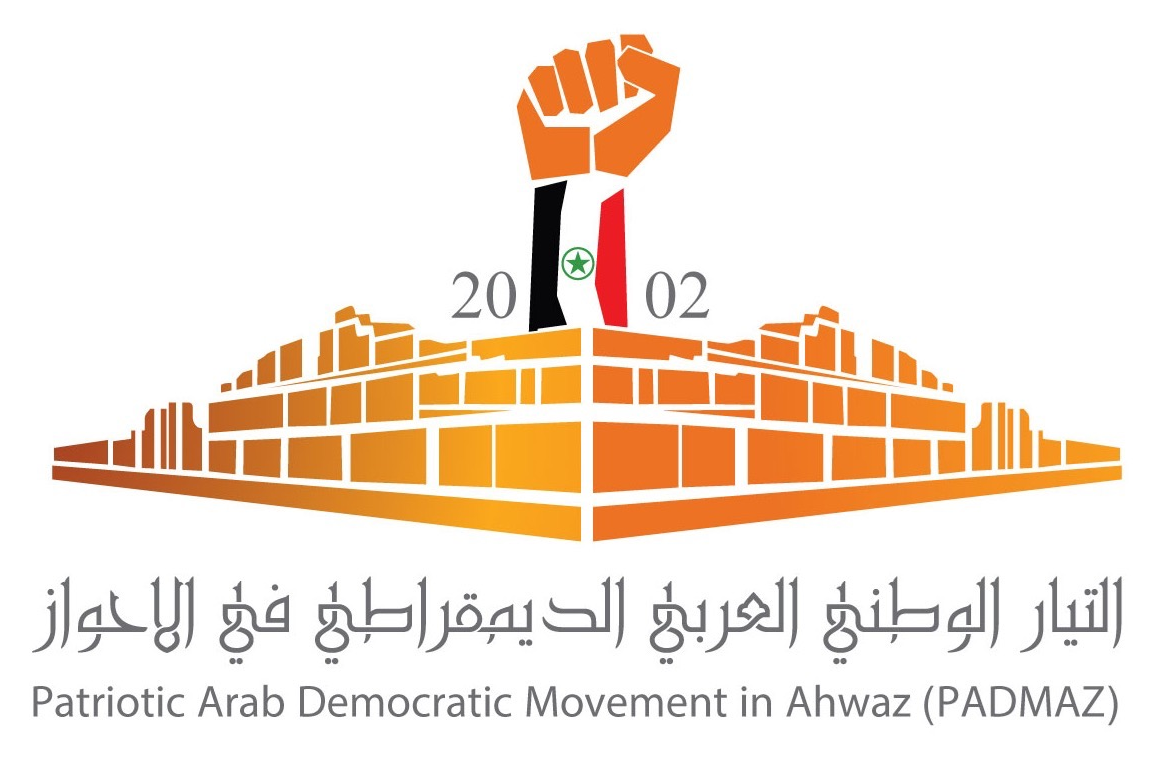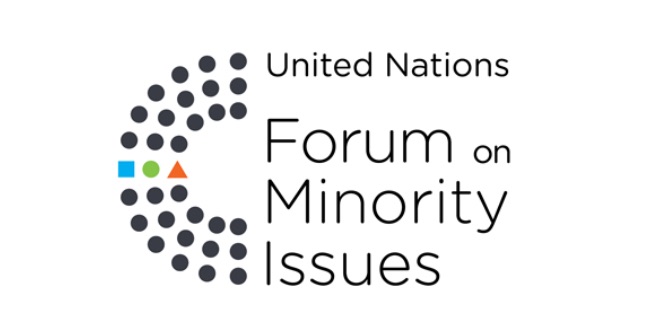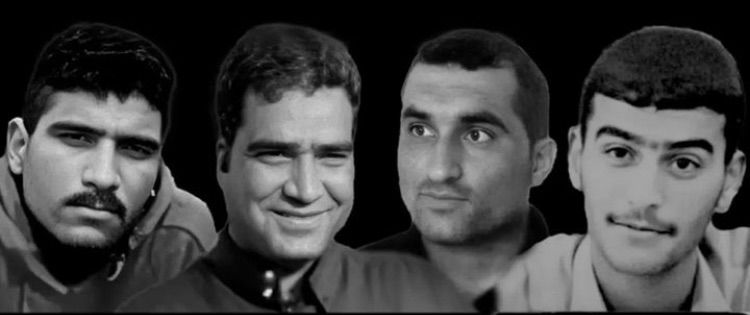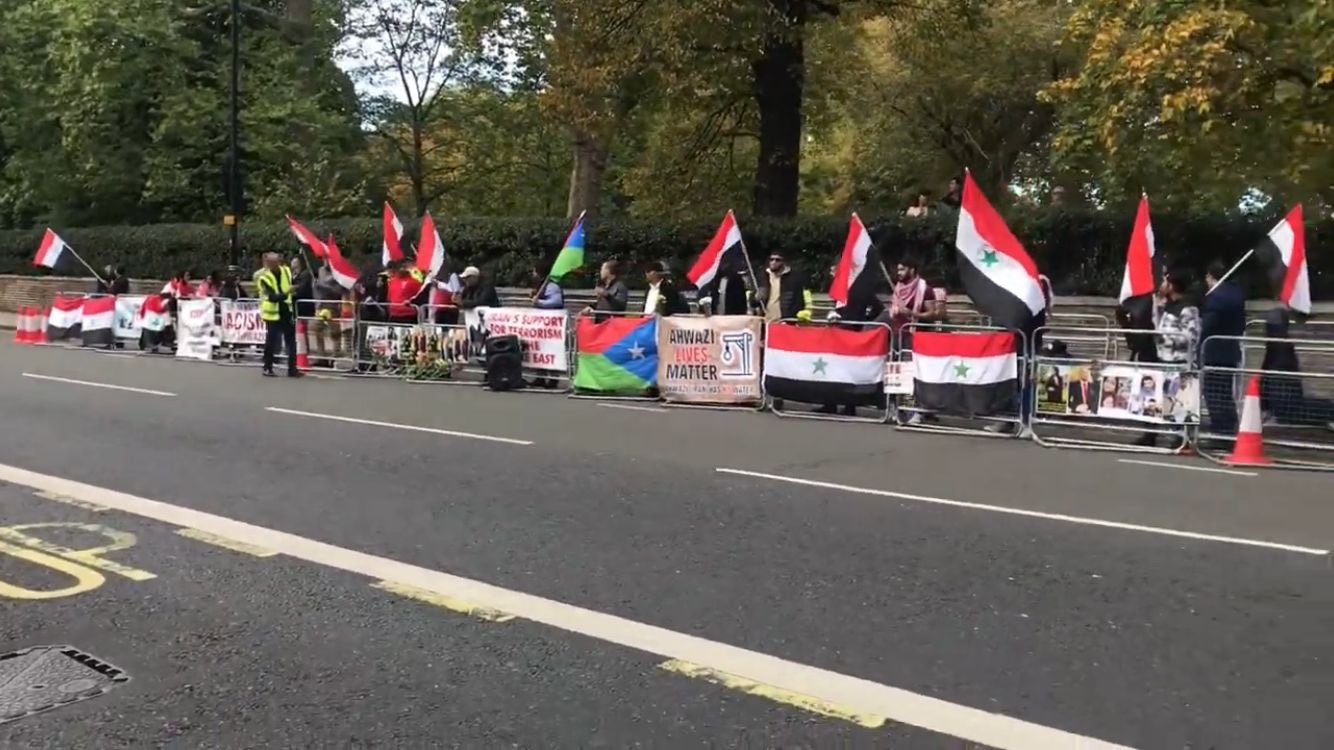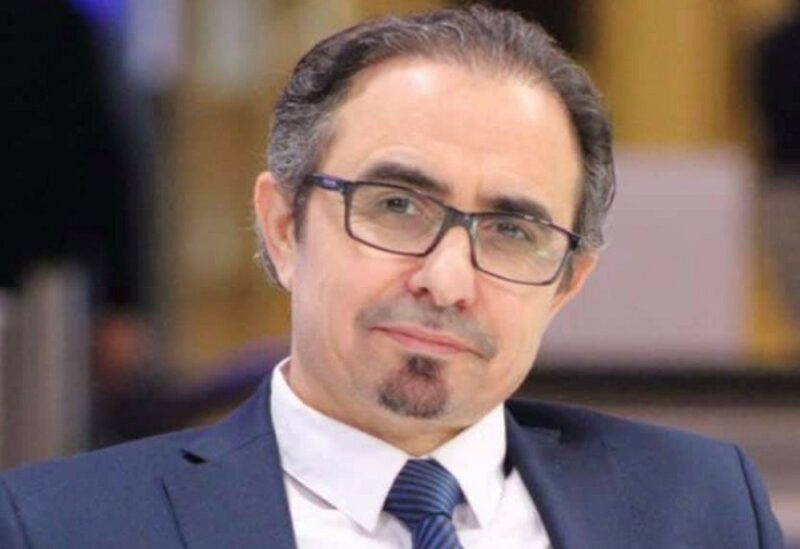Ahwazi dissident forcibly returned from Austria, executed as Iran escalates murderous crackdown
According to unconfirmed reports from Ahwazi human rights activists, 30-year-old Ahwazi political prisoner Jassem Heidari was executed in Sheyban Prison in Ahwaz on the night of Saturday 2 January, despite the regime informing his family that he was to be executed the following day, Sunday. Jassem, who had fled to Austria seeking asylum in 2016, was denied refugee status and forcibly repatriated to Iran in 2018, despite notifying authorities that, as a dissident who had protested against Iranian regime persecution of Ahwazis and its brutal war on Syrians, he would be killed if he returned. Soon after his return, he was arrested and, as he had predicted, imprisoned, tortured, forced into signing a false confession and sentenced to death.
The Telegram account of KhakZadegan, an Ahwazi human rights group, which reports from human rights activists inside Iran, stated that “Unofficial reports from inside Sheyban Prison or Ahwaz Central Prison say that Jassem Heidari, an Ahwazi political prisoner, has been executed, but his relatives say that consulting the judiciary and security officials, they have been told that his death penalty will be executed tomorrow. The life of this Ahwazi prisoner is in danger. Let’s not be accomplices to criminals through silence”.
The mention of complicity is an oblique condemnation of the international community’s continuing silence over the regime’s brutal persecution of Ahwazis, even while proclaiming its outrage over human rights abuses elsewhere. In the photo below, Jassem can be seen, holding up a placard reading ‘Your silence is killing us’.

Ahwazi rights groups revealed that regime intelligence agents have transferred the Ahwazi detainee Jassem Heidari, who has been sentenced to death in 2020, from Sheyban prison to an unknown destination a few weeks ago, increasing concerns that they intend to execute him soon. Heidari’s family lost communications with him some time ago, with regime officials refusing to allow any visits, contact, or phone calls.
Adding insult to injury, regime officials had reportedly contacted Heidari’s family earlier during his detention to urge them to convince him to confess to the false accusations against him and express his ‘regret’ at the crime the regime authorities were trying to frame him for after he flatly refused to ‘confess.’ The regime authorities threatened his family members and told him that if they could persuade him to provide a filmed ‘confession,’ his sentence might be reduced, and he would not be executed.
When his family approached him and pleaded with him to make the confession, if only to stop the regime from executing him, Jassem refused, telling his family members not to believe anything the regime officials told them and urging them to be aware that the regime planned to execute him whatever happened. Activists close to his family also said that Jassem told them the claims of the regime officials that they would commute his sentence were simply lies and deception, with this cruel trickery used to extract false confessions from a number of detainees, who had subsequently been executed after making these Orwellian filmed false confessions.
This brutality continues to afflict all in Ahwazi society, with the regime’s ‘security’ forces launching a brutal assault on Ahwazi street vendors, including women and children, on Friday (1 January 2021), throwing their goods on the ground and beating them indiscriminately on the pretext that they did not possess the necessary licenses.
The attack comes as the Iranian regime steps up its already brutal repression of the region’s indigenous Ahwazi people, targeting political and cultural activists, intensifying its crackdown on detainees, and continuing its ceaseless attempts to suppress the rights and identity of the Ahwazi people.
While the regime’s repression has always been severe and merciless, it is now expanding the scale of its despotism to include as many people as possible and inflict the greatest possible harm on the Ahwazi cause and its most prominent activists.
Municipal elements in the capital city Ahwaz, backed by the Iranian regime police, attacked the stall owners in Kahraba district west of the city.
According to eyewitnesses who saw the assault in Ahwaz city’s Kahraba neighbourhood, Iranian regime officials and police subjected the street vendors to a brutal and sustained assault in which several were wounded, while municipality personnel scattered the items being sold on the ground.
The municipality officials demolished the market where the vendors sold fruit and vegetables, alleging that the stallholders had established it without a license. With their pitiful stocks gone and their stalls destroyed, the vendors, who were already amongst the poorest people in the city, have been left with no way to earn their livelihood.
Unremitting arrests

The regime is also continuing its raids and arrests on Ahwazi activists and random citizens, raiding the home of 50-year-old Razi Sheikhani Kaabi in the town of Falahiyeh in the week before New Year and ransacking his house in front of his terrified family. Activists in Ahwaz report that the regime personnel confiscated the mobile phones and other electronic devices belonging to all his family members, before dragging Kaabi to their vehicle and taking him to an unknown destination.
The Iranian regime is stepping up its crackdown on activists and community leaders in an effort to eradicate potential leaders of any organised resistance and terrorise the people into submission.
Another motive behind the regime’s brutal abuses is to crush the growing movement amongst Ahwazis to assert their autonomy, celebrate their Ahwazi heritage, and reject the decades-long Iranian annexation of the formerly autonomous emirate, with the regime intent on stamping out any effort by Ahwazis or other minorities to assert their own identity.
Voices behind bars
Human rights groups in Ahwaz also reported that an Ahwazi female prisoner, 36-year-old Makia Nissi, who had been imprisoned for two years in Sepidar Prison, died in the prison on 15 December 2020.Despite Nissi suffering from the chronic and excruciatingly painful disease, Crohn’s Disease, the prison staff refused her medical treatment and denied her hospital treatment, leaving her in agonising pain. This and the regime’s relentless abuse and torture, coupled with the prison’s dire conditions, led to her physical health deteriorating rapidly. Mrs Nissi, a mother of three children, whose ages range between five and eight, was imprisoned in an effort by the regime to force her husband, a political dissident, into surrendering himself; this morally bankrupt strategy of victimising dissidents’ family members is routinely used by Iranian regime intelligence services to force the accused to surrender.
In a related development, an Iranian regime court in Tabriz city has sentenced a female Ahwazi activist, 25-year-old Lamia Hammadi, to seven years in jail, supposedly for ‘threatening state security,’ a charge commonly used against dissidents and activists. This came eight months after Hammadi, a popular and well-respected Ahwazi poet and human rights activist, was released from the regime’s infamous Sepidar Prison in the regional capital on bail of 40 billion riyals after being imprisoned in October 2018 over her activism.
Hammadi, the mother of two young children, has gained widespread popularity, especially in her home city, Khafajiyeh, for her poetry and her support for human rights.
Similarly, another regime court sentenced Ahwazi activist, 23-year-old Mostafa Jassim Sarhan Hilali, who was already imprisoned on fabricated charges, to a further 14 years imprisonment on specious charges including ‘organising cultural activities on Ahwaz history and importance of preserving mother language.’
Hilali, who moved from Ahwaz to live in Zahedan city nearly eight years ago, was detained almost two years ago over his activism. He was subjected to brutal torture in detention, including losing his front teeth due to beatings in efforts to coerce him into confession to crimes he knew nothing about. He was then moved from Zahedan to Mashhad and then Shayban prison. He was sentenced to an additional fourteen years imprisonment on charges of inciting sedition against the Iranian regime’s national security and insulting Ayatollah Khamenei.
Unknown fate
Meanwhile, in Ma’shour, the family members of detained Ahwazi activist Hossein Shennawi have called on international rights organisations and entities to intervene in order to reveal the detainee’s fate ten days after he was arrested. Shennawi, a 42-year-old cameraman and photojournalist, who had been documenting the regime’s human rights abuses and posting the footage online, was detained by regime security forces in a raid on his home in Ma’shour and brutally beaten in front of his family before being taken to an unknown destination. The officers also confiscated his camera and recording equipment during the raid.

Ahwazi rights groups reported that Shennawi suffers from several diseases, including stomach ulcers, asthma, and kidney stone. His continued detention in the light of the Covid-19 pandemic poses serious – life-threatening – risks to his health.
Solidarity with the detained Ahwazi female rights activists
Despite the regime’s brutal repression and efforts to crush all resistance among the indigenous people of Ahwaz, Ahwazi activists continue to express solidarity with their brethren, with a solidarity campaign with imprisoned Ahwazi female activists gaining support in the region and beyond.

Many activists in Ahwaz and abroad, including artist Mohammed Aboud Abyat, are joining the campaign and demanding that the unjustly jailed women be freed, with Abyat creating shocking artwork depicting the dire conditions in which the women are detained.
The campaign was launched after Iranian regime authorities detained four more Ahwazi female human rights activists in November and December. The five women – Fatema Tamimi, Maryam Ameri, Zeinab Sawari, Fatema Sawari and Azhar Alboghbiesh – are all humanitarian activists, as well as being involved in working with children and raising awareness of Ahwazi culture and heritage.
Dehumanisation of Ahwazis
Iran’s regime relies heavily on inculcating an unconscious anti-Arab racism amongst its own ethnically Persian population to support its brutal, oppressive policies towards Ahwazis and other Arabs, even while shamelessly presenting itself as a saviour of the oppressed.
Among the key uses of racial stereotypes is rationalising and facilitating murderous dehumanisation that, when unchecked, leads inexorably to justifying or actively perpetrating genocide. Stereotypes which present a certain ethnicity or group within society not just as troublemakers, but as innately inferior ‘other’ and ‘subhuman’ help to persuade the target audience that the targeting of that group is a benefit to society.
While many in the West see murderous racism and ethnosectarian hatred as primitive historical evils that now exist only among a warped few in society, Nazi Germany and, in the modern-day, Iran’s ‘Islamic Republic’ leadership show how easily these poisonous sentiments can be shaped, promoted and encouraged by totalitarian regimes, with murder and genocide being dangerously easy to carry out provided the perpetrators use effective ideological tools and stereotypes about their target victims.
These lethal stereotypes quickly equip human beings with an ideological prism through which the subjugation and murder of their fellow humans, supposedly for some greater purpose, is not only legitimate but necessary. In today’s world, what is happening to Myanmar’s Muslims would not be possible without such stereotypes. Similarly, the Chinese regime’s barbaric persecution of Uighur and other Muslims would be far more difficult for the regime to justify if it didn’t have the handy ‘Muslim terrorist’ stereotype to call on. And of course, the Nazi Holocaust was possible only due to prior dehumanisation and demonisation of Jews based on negative ethnic and religious stereotypes.
For many totalitarian regimes, the negative stereotypes of ‘troublemaking separatists’, ‘terrorists’ and ‘insurgents’ are used to delegitimise any protest or dissent, with Iran’s regime constantly deploying this stereotype in any discussion, analysis or news coverage of protests in Ahwaz; many fear that far stronger repression is on the cards.
Of course, the issue is not limited to these considerations. An Iranian analyst is, naturally, more likely to write about Tehran and the surrounding areas that he or she is familiar with rather than paying attention to the regime’s negative depiction of Arabs and other minorities. But every Ahwazi is familiar with having their concerns about the regime’s racist repression airily dismissed by Iranians, even by activists, liberals and leftists, with, “Let’s not support separatists” or “I don’t want to betray my country by supporting separatist Ahwazis with my writings.” In any discussion of the regime’s horrendous abuse of prisoners in the regime’s jails, the mention of Ahwazi prisoners’ suffering generates an awkward silence, during which the strange double standard on human rights again becomes apparent.
Inequality and oppression are not possible by force alone. Governance by and legitimisation of discriminatory systems requires ideologies and ideas that convince people that, in direct contradiction to reality, what is happening is not inequality, injustice, and oppression, but justice, logic, and rationality. This is how Iran’s regime convinces Persian society that Ahwazis are a national threat who ‘deserve’ to be oppressed, and killed if they dare to demand freedom.
Scottish writer and editor Ruth Riegler slammed the international community for what she called its collusion with Iran’s regime, saying, “We hear endlessly from the UN about the ‘human rights’ of dictators and totalitarian regimes, but their victims, the people to whom these regimes deny human rights and freedom, are ignored. Ahwazis’ suffering, their fundamental rights, are simply disregarded; their humanity is written off for the sake of worthless agreements with a regime that bloviates about ‘resistance,’ but whose only genuine resistance is to basic human decency.
Women like Fatimah Tamimi, Maryam Ameri, and so many other great Ahwazi activists, male and female, should be icons of freedom, justice, and human rights globally. However, instead, they’re ignored by the world, incarcerated in medieval prisons for daring to dissent by a regime terrified of freedom, justice, human rights, even while it lectures about supporting the oppressed of the world – a supremely bad joke ranking alongside the Khomeinists’ claim to be fighting terrorism.
To be fair, the ayatollahs aren’t the first Iranian rulers to throw Ahwazis under the bus; the people of Ahwaz have had almost a century of being treated as expendable for the sake of treaties and oil deals – but the so-called ‘Islamic Republic’ leadership, which seized power by hijacking a revolution for freedom like its ‘Islamic State’ namesakes, which are its mirror reflection, is the most brutal to date – Iran’s own Daesh, with a UN seat. We’re in the 21st Century, and yet the UN and international community are bending over backwards to defend and enable a brutal totalitarian theocracy that rules by terror and oppression, props up blood-drenched tyrants like Assad, and belongs in the dustbin of history. The Ahwazi people and all the Iranian regime’s other victims in Iran and across the region are the ones who deserve the world’s solidarity; their oppressors deserve nothing but contempt.”
Rahim Hamid
source: dusc.org


